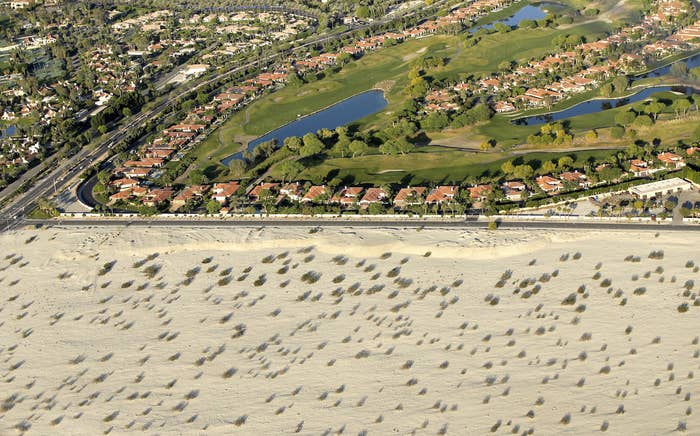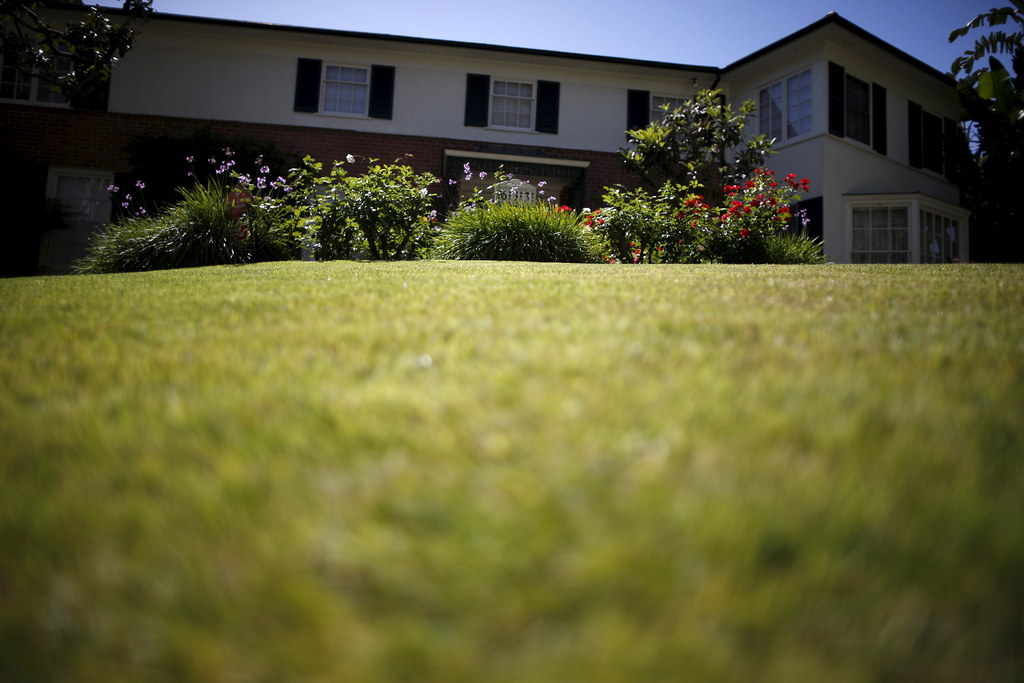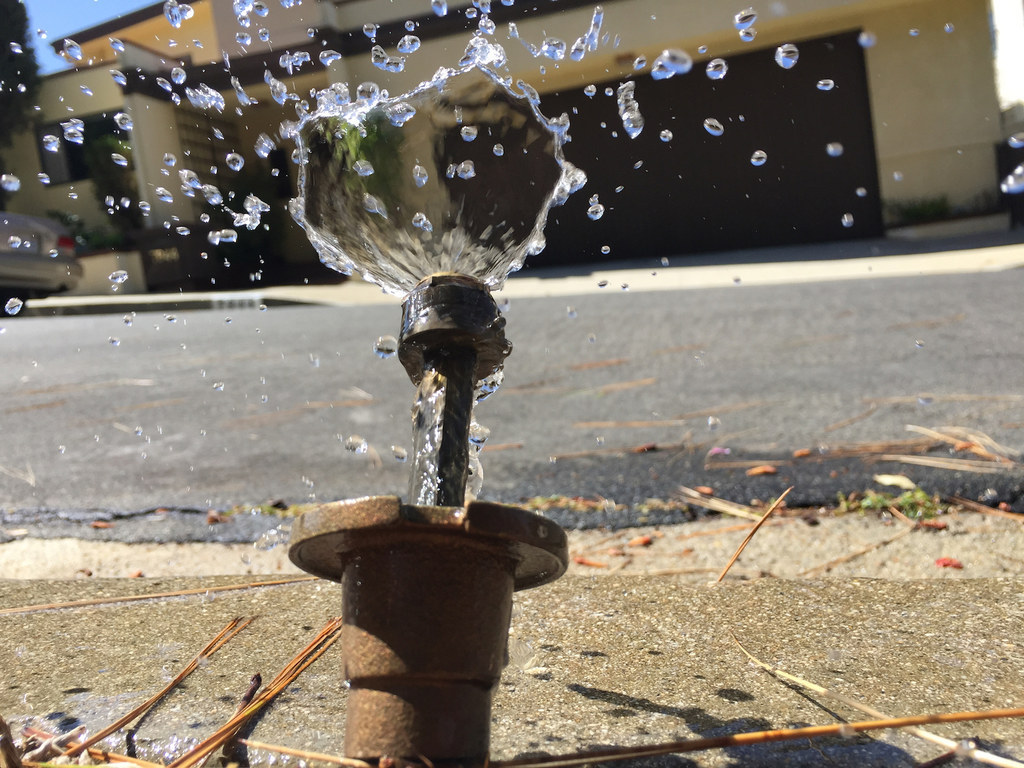
Just north of San Diego, there's a stretch of land that begins at the coast and winds its way through a set of dry hills covered in scrub oak and white boulders.
The area — which includes a handful of San Diego satellite communities — is generally affluent, mostly includes single family homes, and it uses a lot of water.
Like, really a lot.
According to data released this week by the the State Water Resources Control Board, homes in the Santa Fe Irrigation District, as this area is called, used an average of 584.3 gallons of water per day last September.
To put that into perspective, a typical 10 minute shower uses between 20 and 40 gallons of water. A modern toilet uses less than two gallons.
As California's drought worsens and cities — but not farms — are forced to cut water use, communities like those in the Santa Fe Irrigation District are coming under increased scrutiny. The new data, for example, is part of a proposal to demand 35% reductions from the state's biggest water users — cuts that would be even steeper than those Gov. Jerry Brown initially ordered last week.
To understand why some places in California use vastly more water than others, BuzzFeed News spoke with water districts on opposite ends of the consumption spectrum.
1. Areas that use a lot of water tend to have very big yards.
In the Santa Fe Irrigation District, lots can be huge. Jessica Parks, a district spokesperson, said in some areas permits require homes to be built on three acres or more. When that property is landscaped, as some homeowner associations in the area require, it needs a vast amount of water.
According to Parks, the majority of area residents' water is going toward outdoor landscaping — a point driven home by the fact that when it rains consumption drops by hundreds of gallons per household.
Something similar is going on in the Bakersfield area, where the Vaughn Water Company serves nearly 10,000 homes. General Manager Van Grayer told BuzzFeed News that 75% of residential water usage in his district goes toward outdoor landscaping on large lots.
"It's not uncommon to have one acre, two-and-a-half acre properties," Grayer said. "We have a lot of people out here that have big homes on big lots."
It's not surprising to hear that there are big yards in California, and that those yards suck up a lot of water. Indeed, much of the coverage of the drought has focused on residential water use, and The New York Times recently reported that the drought is testing the "history of endless growth."
But what stands out from the data is that slight variations in development patterns have a significant impact on water consumption. In the city of San Diego, for example, which is near the Santa Fe Irrigation District, households only use an average of 81.8 gallons. In Barstow, a sweltering desert city halfway between L.A. and Las Vegas, the average is 98.3 gallons.
All of which is to say that it may be a very particular type of growth that drives extreme water consumption. And getting residents in those developments to change that can be tricky.
"Typically they can afford the water," Grayer said, "so they use it."

2. Hot, arid climates also drive some places to use more water.
Parks described her district as a "semi-arid" zone that only receives about 10 inches of rain per year. Grayer described his region similarly, saying a hot climate and little rainfall tend to increase outdoor watering.
And in hot, arid climates, it tends to take more water to sustain a lawn and other residential vegetation than it might in a cooler, wetter coastal city.
This isn't a hard and fast rule. There are arid places that use less water and coastal places that use a lot, but a number of the thirstiest areas — Coachella Valley Water District, Desert Water Agency, Rainbow Municipal Water District, etc. — are also located in inland deserts.

3. The aggressiveness of past water restrictions also makes a big difference.
In Santa Cruz, the average person uses only 44.9 gallons of water a day — or roughly ten times less than what customers of the Vaughn Water Company use. Santa Cruz is coastal and has some climatic advantages, but in large part its dramatically lower water usage is due to an aggressive program that began in 2014.
Eleen Cross, a spokeswoman for the city's water department, told BuzzFeed News that beginning last summer, each person was allocated about 60 gallons of water per day. If people used more, they were fined $25, with penalties increasing for repeated offenses.
The city also set up what Cross described as a "water school," where people who received citations could go to learn about conservation. Ultimately, the city grossed $1.5 million in fines, about half of which was refunded to those who went to the water school.
The program apparently worked. Cross said during the dry summer months people let their lawns die and water consumption went down.
"If you had come through Santa Cruz last summer there were a lot of areas that were just completely brown," she said.
Among the heavier water usage districts that spoke with BuzzFeed News, none had such aggressive water restrictions in the past, though they're trying to figure out how to get similar results now. In the Santa Fe Irrigation District, Parks said officials can issue fines for violating water restrictions, but are discussing ways to actually monitor offenders.
"We put all these rules in place and now what we're having to do is increase enforcement because we're not seeing a reduction," she said.
At the Vaughn Water Company, officials plan to add staff members to its water patrol. The patrol will mostly work with people to help them understand conservation, but repeat offenders can ultimately be fined. And if the restrictions work, some of the areas that have been guzzling water may begin to sip.
"I believe 25% is doable in my district," Grayer said, "by limiting outdoor watering."
